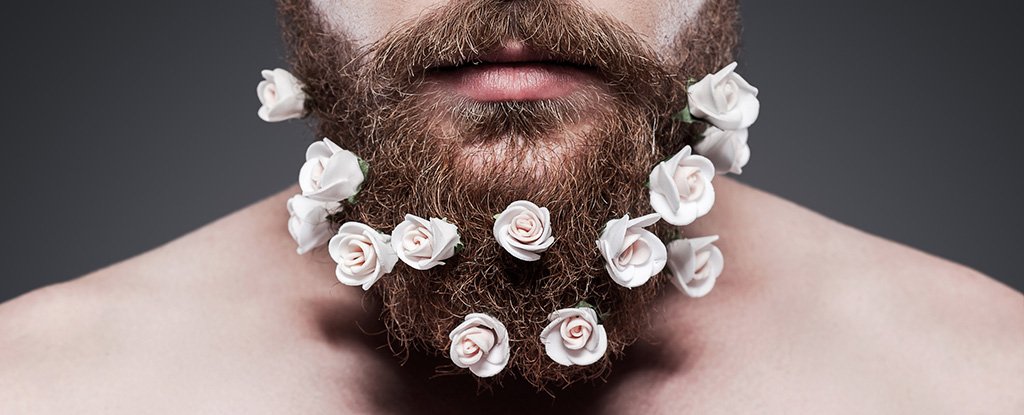
Peacock courtship is no small affair. The peacock gyrates a fan of shimmering feathers to impress his potential partner. The peacock will be out of luck if his tail feathers don't look as good as his rivals.
One popular evolutionary explanation for why peacocks have such elaborate, but cumbersome plumages would be that they are a 'honest sign' of their genetic quality. Conventional wisdom would suggest that facial hair functions in the same way in humans.
Facial hair is a sexually dimorphic trait that marks a systemic difference between two sexes. It has been thought that facial hair in humans 'honestly signals' higher testosterone levels in people who have more facial hair than their peers. This signaling to potential partners or their competition that they are more dominant or masculine.
A new study in Archives of Sexual Behavior found that there is no correlation between facial hair and self-perceived dominance among men and testosterone levels.
Researchers collected data from 97 physically active young men. Researchers used multiple controls to determine the testosterone levels of men. They also measured testosterone levels at 7 a.m. and 11 a.m., since testosterone levels naturally decrease throughout the day.
Participants were asked not to smoke, drink alcohol or exercise for 24 hours prior to the study. They were also asked not to eat or brush their teeth for two hours before testing.
The first question asked participants to provide information about their age, height, and beard. These were also measured by digital calipers at a resolution of 0.01millimeters. The researchers found a strong correlation between the objective beardedness measurements and participants' self-assessment.
After all that, the participants took their first saliva sample. Participants then did a cycle (or other physical activity) to increase testosterone levels. After 12 minutes, another saliva sample was taken. The men were asked questions about their dominance during the 12-minute interval.
Participants were asked to complete a questionnaire that measured their dominance. They had to answer statements such as 'I often persuade other people to behave as my suggestions' and 'It's me who influences the others'.
Interesting to note is that although there was no evidence to suggest that beards indicate psychological dominance or physiological testosterone levels, the study also found no negative correlation.
This could be expected if bearded men deceive others into believing they have high testosterone levels, but in reality they possess them to'mask low testosterone levels. The male fiddler crab is an interesting example of "dishonest signaling" in nature. He sometimes develops a stronger claw than the one it had before, but it is often larger than the previous one.
The authors suggest that facial hair on males may be a visual self-presentation strategy. This is purely based on cultural norms, and does not have to do with any evolutionary signals. A farmer who has a long, scraggly mustache may communicate something different to his peers than someone who has spent time styling a more stylized look.
Another study, which looked at the relationship between beardiness and psychological dominance, was conducted in 2020. It found contradictory results. A significant relationship was found between facial hair and individual dominance. The researchers did not use hormone sampling in this instance.
The current study will provide additional data that will help to expand the discussion about the possible function of facial hair in men. However, it will be debated whether facial hair is a proxy or a way to feel masculine and male dominance, or if it's simply a fashion statement.
The researchers concluded that they strongly encouraged other scholars to duplicate our findings with larger samples in order for future meta-analyses to clarify the association between testosterone levels and dominance.
The journal Archives of Sexual Behaviour published the study.
